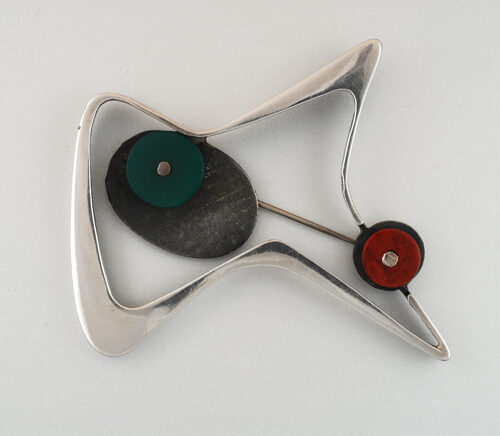Product Description
Margaret de Patta “Abstract” brooch, silver, chrysoprase and carnelian, signed, c. 1945, Illustrated: Design 1935 – 1965, What Modern Was: Selections from the Liliane and David M. Stewart collection, 1991



MARGARET DE PATTA (1903-1964) USA
Abstract brooch c. 1945
Sterling with both a smooth finish and a textured surface in a biomorphic design set with rondels of chrysoprase and carnelian
Marks: De Patta chevron insignia, STERLING
Illustrated: Design 1935 – 1965, What Modern Was: selections from the Liliane and David M. Stewart collection ed. Martin Eidelberg, (Montreal/New York: Le Musée des Arts Décoratifs de Montréal/Harry N. Abrams, 1991), p. 100, illus. 130.
Related designs illustrated: The Jewelry of Margaret de Patta: A Retrospective Exhibition, Oakes Gallery and The Oakland Museum (Oakland, Calif.: 1979); Messengers of Modernism: American Studio Jewelry 1940-1960, ed. Martin Eidelberg, (Montreal: The Lake St. Louis Historical Society, 1996).
L: 3 1/4”
Margaret de Patta “Abstract” brooch, silver, chrysoprase and carnelian, signed, c. 1945, Illustrated: Design 1935 – 1965, What Modern Was: Selections from the Liliane and David M. Stewart collection, 1991
